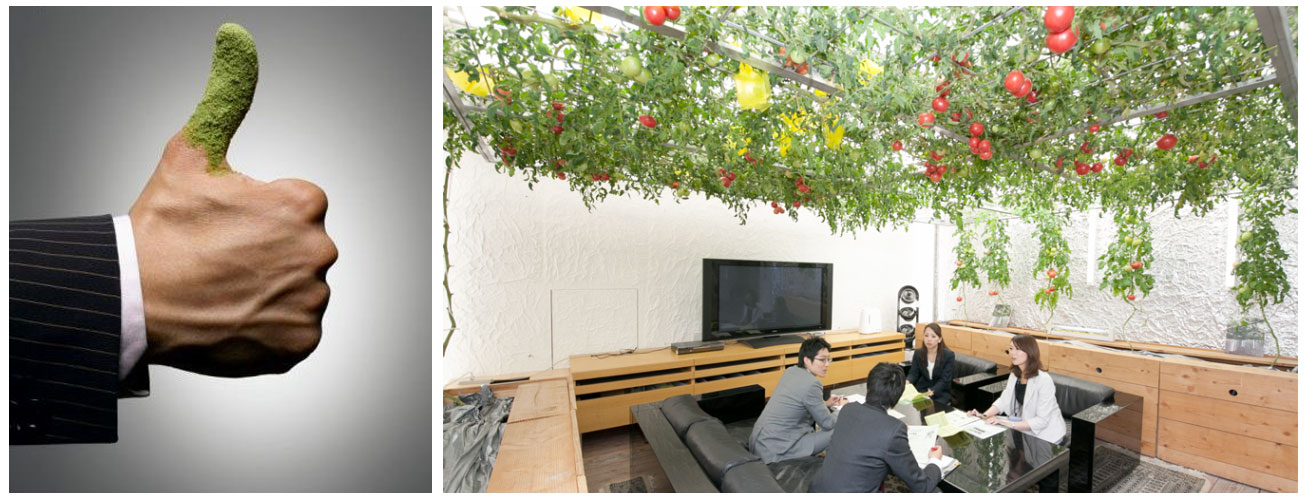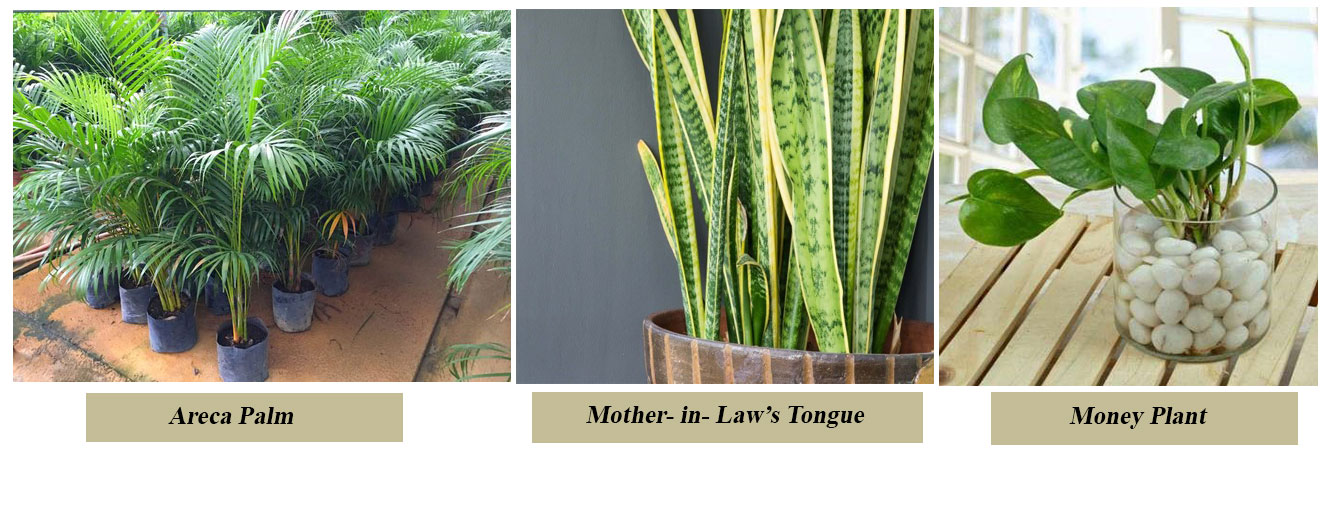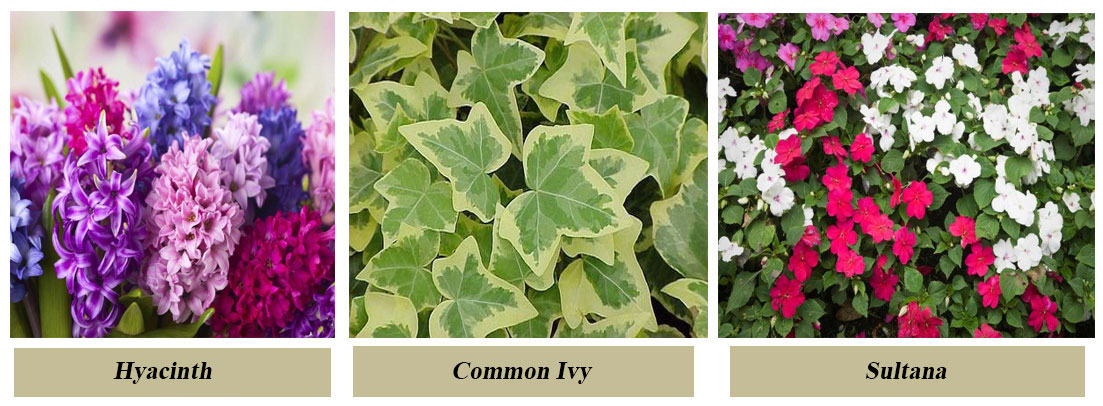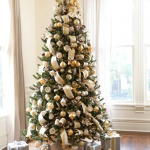INTERIORSCAPING A MUST IN TODAY’S WORLD

INTERIORSCAPING A MUST IN TODAY’S WORLD
A QUEST FOR THE GREEN THUMB
Change must start with you, in today’s world where the air pollution is high, it’s important to have indoor plants. JEDIIIAN Kritika Kalyanpur of Interior Design Course, JD Institute of Fashion Technology writes about the importance and types of plants used for plant scaping.
A gardening related expression – “having a green thumb” that I had first heard during the tirade of a very dignified but very irritated adult was when I was a seven-year-old mischief-maker (who had accidentally broken one of her potted plants whilst on a certain escapade). This ensured a belief in magic was instilled in me; as I had taken her quite literally and throughout a major part of my childhood felt that the day I would successfully grow a plant, my thumb would turn green – and wouldn’t that be fancy!
Landscaping has predominantly remained an outdoor feature in the field of space design. However, as we egg into the clutches of global warming and polluted outdoors – most of the people now prefer staying within the confines of the air-conditioned indoors, if they can help it. Hence, what was once a hobby or a decorative aspect is soon turning into a professional field, called indoor landscaping. Also known as plantscaping or interiorscaping, the aim is to bring functionality and beauty within a building using plants. Interior plantscaping brings in a host of physical and mental health benefits. The essential benefits being: removal of carbon dioxide and production of oxygen-rich air, filtration of air and improving air quality by removing toxins, temperature regulation resulting in conservation of energy, to name a few.

Pasona Group – Tokyo, Japan
According to Kamal Meattle – an Indian environmental activist and CEO of Paharpur Business Center & Software Technology Incubator Park (PBC-STIP) based in New Delhi, India, some of the plants that go about doing the heavy lifting of providing the above-stated benefits at very economical prices, are given below:
|
Name
|
Common Name | Botanical Name | Benefit |
| The Living Room Plant | Areca Palm | Chrysalidocarpus lutescens | It converts carbon dioxide (CO2) to oxygen during the day.
|
| The Bedroom Plant | Mother-in-law’s Tongue | Sansevieria trifasciata | It converts carbon dioxide to oxygen during the night.
|
| The Specialist Plant | Money Plant | Epipremnum aureum | It removes volatile chemical toxins and formaldehyde which are produced by paper, plastic, carpets etc. |

The PBC-STIP premises in Delhi have tried and tested the above plants for more than twenty years now and it houses over 1,200 plants for 300 building occupants. A study published by the Government of India states that this is one of the healthiest buildings in India.
The Pasona Group in Tokyo, Japan has a curtain wall of deciduous shrubs that help them conserve energy by blocking the sunlight in the summer and letting it in during the winter.
A study, published in ‘Environmental Health Perspectives’, by Joseph Allen, Director of the Healthy Buildings Program at the Harvard Center for Health and the Global Environment revealed that “when lowered CO2 levels were coupled with lower pollutants in buildings, cognitive scores were 101% higher than in conventional buildings”. Fewer sick leaves/days and more productive minds are but a dream-come-true for any employer as well as an individual.
If the above are not reasons enough to deck your office or home with Flora, then let me appeal to the cook/foodie in you. An example of a commercial enterprise that has taken a unique initiative is the headquarters of Pasona Group a multinational corporation, the second largest staffing company in Japan. They grow their own food through what they call an “urban farm” within their premises. (Provigil) The concept of their building is “symbiosis with nature”, with the main aim to provide a healthy working environment. They grow rice, herbs and an assortment of vegetables and fruits which provide aesthetic, healthy green interiors and supplies for their cafeteria.
Homeowners, who may lack the resources that companies have at their disposal, can turn to herbs like Parsley (Petroselinum crispum), Sage (Salvia officinalis), Rosemary (Rosmarinus officinalis) and Thyme (Thymus vulgaris) which are healthy, aromatic, and ensure delightful culinary experimentation.


Using plants to aesthetically design a space is an age-old concept that has been around since the fabled Hanging Gardens of Babylon. While designing a space, bright flowering plants like Sultana (Impatiens walleriana) and Hyacinth (Hyacinthus) can form focal points and leafy plants like common Ivy (Hedera helix) can blend in and give more life to space. The book titled “Hanging Baskets” by David Joyce which gives information on innovative designs, materials, routine care, plants and their properties that go into making hanging baskets, can be a holy book to beginners attempting their hand at bringing nature home.

Thanks to technology, almost all our basic activities that earlier compelled us to go outside for even a brief period – are slowly inching into our homes; be it working from home or owning a home theatre. As an offset to this, unfortunately, our exposure to plants and trees is now majorly indirect and Interior Landscaping is the solution to this dilemma.
Although an avid lover of infusing plants into my life – edible or not, the closest I came to being the proud owner of the famous “green thumb” was, when I made a failed attempt at tasting a steaming South Indian snack and had to dip my thumb and two other ill-fated fingers into the cold green mint chutney next to it, for relief. But undeterred, my quest shall go on – as Audrey Hepburn wisely said, “To plant a garden is to believe in tomorrow”
Reference:
YouTube – TEDx Delhi & Ted Talks of Mr Kamal Meattle and the AJ+ Channel
Books – Hanging Baskets By David Joyce
Images from –Wikipedia, Pinterest and Google Images









